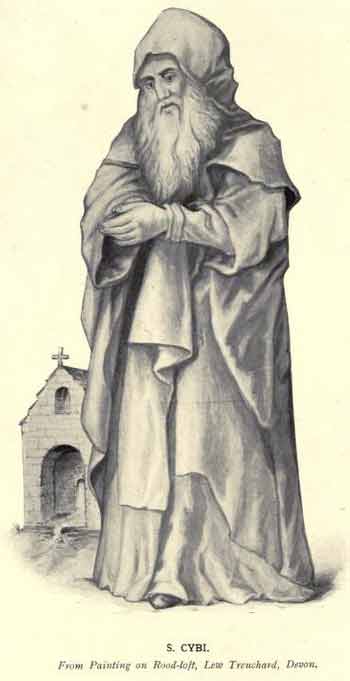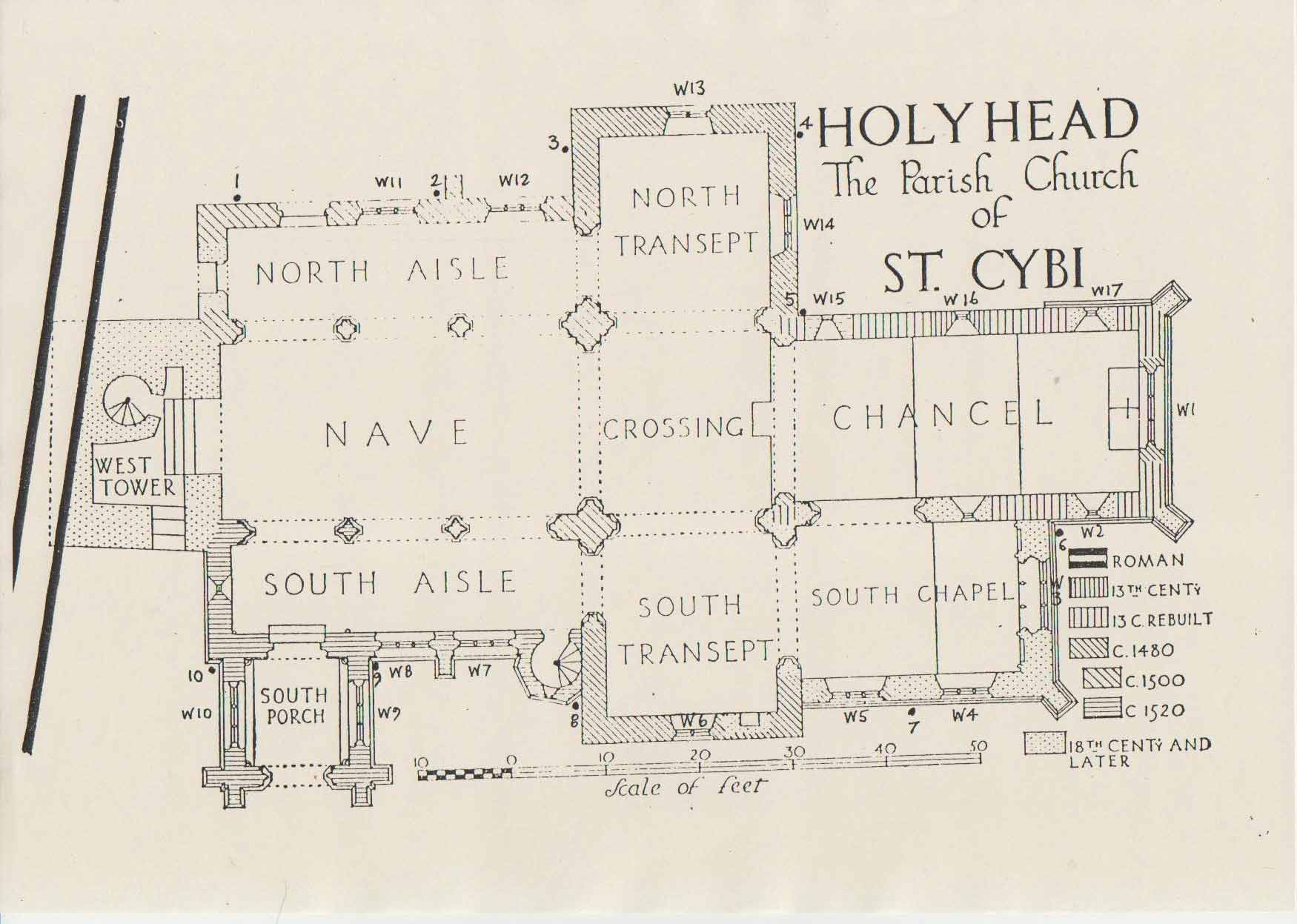An introduction to the Buildings.

St Cybi’s church, located in the centre of Holyhead, Anglesey, stands within the walls of Caer Gybi Roman Fort. This fort was built above a 16 ft. cliff. Until the 1800s the sea came up to the foot of the cliff, but since then land reclamation connected with improvements to the port has moved the shore line well away from the cliff. The Roman fort, of international importance, is an Ancient Monument.
Historical Detail of St Cybi’s Church
The present church dating, mainly, to between 1480 and 1520 and of national significance is Grade I listed and contains 15th / 16th century carvings both inside the church and externally on the south side. There is a fine Carrera Marble memorial by Hamo Thornycroft and other features of interest.
Within the grounds of the upper churchyard is Eglwys y Bedd (Chapel of the Grave). This building, parts of which date from the 14th century, reputedly stands on the site of, first, the grave of Seirgi, an Irish Chieftain killed in battle in about 450 AD, and then the shrine to St Cybi who died here in 554 AD. The building is Grade II listed.
The lower churchyard, on reclaimed land, was consecrated in 1826. The ornate gateway from Victoria Road and the adjoining wall are Grade II listed.
Like any church that has been in existence for over 1400 years the story and history of St Cybi’s church involves not only local events and people but is bound up in the much wider context of politics, as well as religion.
Who was St Cybi?
He was related to Wales’s Patron Saint, St David.
In his time St Cybi was a person of significance and importance. J. W. Willis-Bund F.S.A. comments “Rees, in his Welsh Saints, (pp 182 and 266) states that in the early Welsh Church it was customary to make the abbots bishops, and the examples he gives are Paulinus at Whitland, and Cybi at Caergybi; but there is no evidence to show that either Paulinus or Cybi were bishops in our sense of the word, or exercised episcopal jurisdiction. They were the heads of great monastic establishments, and as such far more powerful, and of far greater importance, than any bishop.”
St Cybi was born in Cornwall in 480, arrived at Holyhead in 540, and died here in 554. From the mediaeval writings, we know he was of a rich Romano-British family of the fifth and sixth century, related to the founders of the Welsh dynasty of princes. His father was Selyf, a Cornish Chieftain whose pedigree goes back to Cystennin Gorneu or Constantine of Cornwall. Cybi’s mother was Gwen, daughter of Gynyr or Caergawch and sister of Non, the mother of Wales’ Patron Saint, St. David.
At the age of twenty-seven he declined to succeed his father and became a monk, leaving home to take up a lifetime of wandering and spreading the Word.
Why Holyhead?
Both the Romans and St Cybi chose the site as a safe landing place on an important sea route. For the same reason the town and port of Holyhead have grown up around the site of the Roman Fort and the religious community within the grounds of the abandoned fort which St Cybi founded.
Whilst, as the history demonstrates, there have been many changes since then there has been continuous occupation of the site as a religious community from this foundation until the present day.
As is to be expected, there are gaps, some of them large, in our knowledge and understanding of the history associated with the site but there is much which we do know. Here, with the help of funding from the Heritage Lottery Fund, we set out some of what we do know.
What we do know is that on the one site we have:
- the most complete Roman structure in North Wales, a Roman coastal Fort of international significance;
- a religious site founded by a highly influential Celtic Saint;
- a Grade I listed church with Royal connections;
- a Grade II listed building once occupied by the first free school in Holyhead, which before then was a 14th century chapel;
- the burial sites of our founding Saint, St Cybi; an Irish Prince, Seirgi, and a Welsh Prince, Rhodri,
- and a lower churchyard with a Grade II listed wall.
Together with a history which covers over 16 centuries St Cybi’s church really is a fascinating place.

The Ministry Area is grateful to the Heritage Lottery Fund for its support in funding this section of our website.

